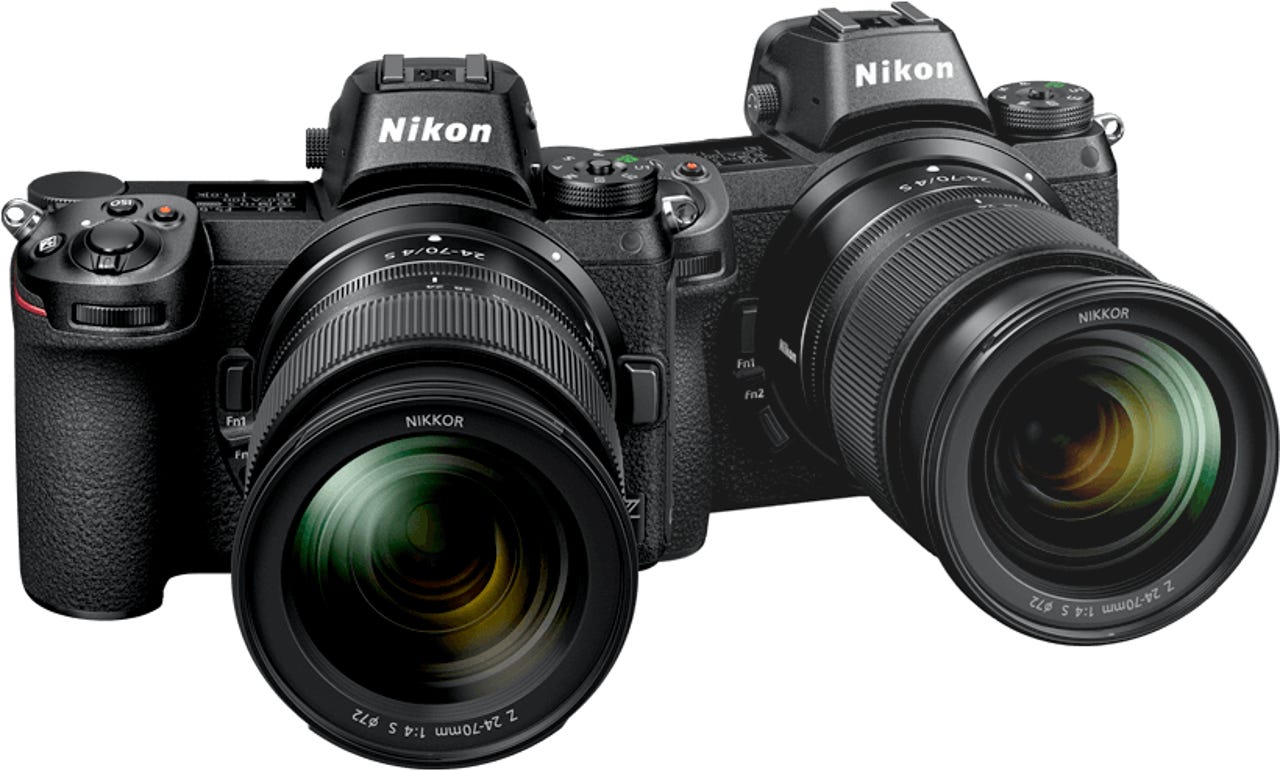The market changes as Sony's mirrorless cameras are threatened by new models from Nikon and Canon


Nikon and Canon have finally responded to the success of Sony's Alpha range by launching their own mirrorless, full-frame digital cameras: the Nikon Z and Canon R ranges. These should stem the flow of defections from the big two's DSLRs to Sony, and may eventually reverse it.
It may seem generous of Nikon and Canon to give Sony a five-year start. However, the new mirrorless cameras involved developing new lens mounts. For a top brand, this is a major -- and very risky -- operation. They will probably have to support it for decades.
Also: Photography tips: How to master the headshot
Professional and serious amateur photographers often invest a lot of money in their range of lenses, and they expect them to outlast several different camera bodies. The sheer cost discourages users from switching to a system with a different lens mount.
Featured
The Sony Alpha made the switch palatable for many users, especially the ones with Canon interchangeable lenses, by providing adaptors for them. The new Nikon and Canon mirrorless cameras remove that advantage with adaptors for their own DSLR lenses. Future buyers will benefit most if they stick to their current camera brand, whether that be Nikon or Canon.
In the longer term, both Nikon and Canon will benefit from providing bigger mounts than the Sony Alpha. They will be able to provide faster lenses with better sharpness and less vignetting in the corners.
The Sony Alpha mount was actually designed for cameras with smaller APS-C sensors, and its 46mm diameter throat is suboptimal for a full frame camera. However, Sony decided against changing its existing mount.
Neither Nikon nor Canon had much success with their small-format mirrorless compact cameras, and took the opportunity to improve their mounts. For its RF mount, Canon stuck with the 54mm diameter it uses for DSLRs, while for its Z mount, Nikon went bigger with a 55mm throat.
In any case, compatibility with DSLR lenses was much more important to Nikon and Canon, because most buyers of their new mirrorless cameras will be people who already own their DSLRs, not old mirrorless compacts.
That leaves Sony with just two advantages. First, having been in the mirrorless market since 2013, it has by far the biggest range of lenses. Nikon and Canon only have three or four new lenses whereas Sony has more than two dozen.
The new mirrorless cameras from Nikon and Canon have larger mounts that are superior for full frame cameras.
Against that, Nikon and Canon expect early adopters to use their existing lenses. Canon's EF adapter works with all the EF lenses produced since 1987. Nikon's FTZ adapter works well with newish AF-S and AF-P lenses, and not too well with older AF and AF-D lenses (no autofocus). This reflects the fact that Canon changed its old FD mount, from the 35mm film days, whereas Nikon retained compatibility with its F mount.
The second advantage is that Sony has three Alpha cameras on the market: the A7 III, A7R III and the A9. Nikon is starting with two models, the Z6 and Z7, and Canon with only one, the EOS-R.
However, both Nikon and Canon traditionally offer lots of models of DSLR to cater for different niches. It seems likely that they will introduce cheaper pro-am mirrorless cameras and more expensive professional models. As with lenses, Sony's advantage may not last long.
Also: 4 secrets: How to take professional photos with your smartphone TechRepublic
Interestingly, Sony does not have an advantage on price. The Nikon Z6 and the Canon EOS-R plus adaptors cost roughly the same as the Sony A7 III (around $2,000), while the more advanced Nikon Z7 costs about the same as an A7R III ($3,500-ish).
When it comes to resolution, Nikon has gone for 24MP and 45MP to match Sonys 24MP and 43MP. However, Canon may have gained an edge by offering 30MP in its solitary camera. Whether the pictures are any better is, of course, a different matter, but people generally like Canon image quality.
So, the stage is now set for a three-way battle between Sony, Nikon and Canon for the full-frame mirrorless camera market.
Enter Panasonic....
Next year, of course, it should become a four-way battle. At the recent Photokina trade show in Germany, Panasonic announced that it planned to enter the market with 24MP Panasonic S1 and 47MP Panasonic S1R cameras. Fortunately, these do not introduce another new lens mount. Panasonic plans to use Leica's 51.6mm L-Mount, and other firms, such as Sigma, may follow.
The L-Mount Alliance will give buyers a choice of cameras and lenses from at least three different suppliers: Leica, Panasonic and Sigma. This seems likely to hurt Sony more than Nikon and Canon. Indeed, if Panasonic's S1 and S1R handle video as well as its GH5 and GH5s cameras, Sony could be in real trouble.
Also: Best Digital Cameras for 2018 CNET
Either way, the past few weeks have seen a dramatic change in the camera landscape. For the past five years, Sony Alpha has been the obvious choice for anyone planning to buy a serious mirrorless camera either to supplement or replace a DSLR. Today, DSLR owners are more likely to buy one from their current supplier, and next year, L-Mount could turn into a serious threat.